If you are looking for a flavorful and easy-to-make udon noodle soup, Tanuki Udon is an excellent choice. This popular dish from Japan's Kanto region features udon noodles topped with tenkasu (tempura bits), which add a delightful flavor.
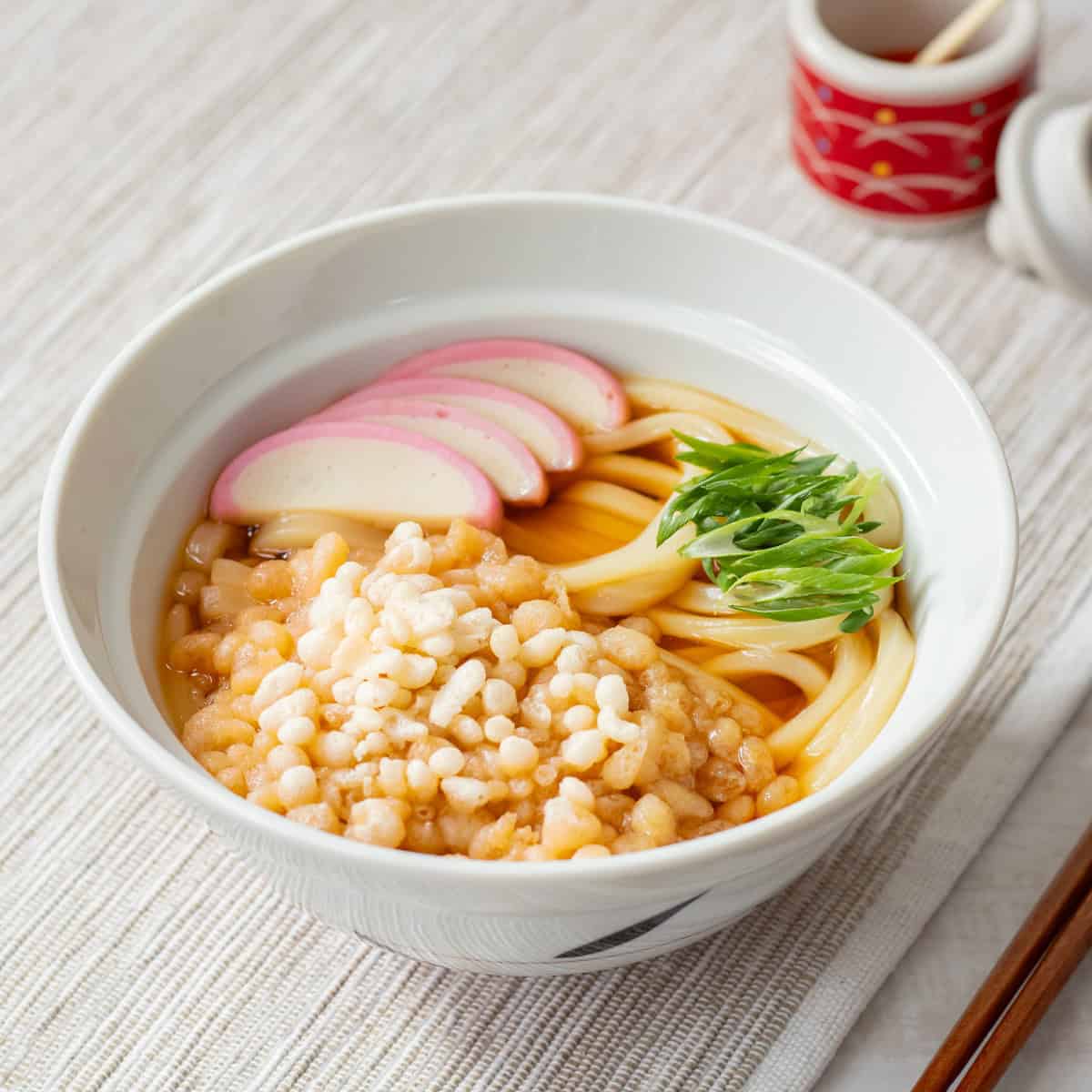
Jump to:
What is Tanuki Udon?
Tanuki Udon is a type of Japanese udon noodle soup featuring a soy sauce-based dashi broth and is topped with tempura bits called tenkasu.
The term "Tanuki" means Japanese raccoon dog, but in this dish, it refers to tenkasu (tempura bits). There are various theories as to why tenkasu is called tanuki in this context, but one widely accepted theory is that the darker color of the soup is reminiscent of a Japanese raccoon dog, especially compared to kitsune udon, which originated in Japan's Kansai region (western Japan) and features a lighter overall color, similar to that of a fox. Another theory suggests that the name comes from a shortened version of the phrase "tane-nuki," meaning "without (nuki) main toppings (tane)," referring to dishes that use only tenkasu as the main topping.
This dish originated in the Kanto region (eastern Japan) and is known for its rich, soy sauce-based flavor. It is a great choice when you are in the mood for a bold-flavored Japanese-style udon noodle soup without much fuss.
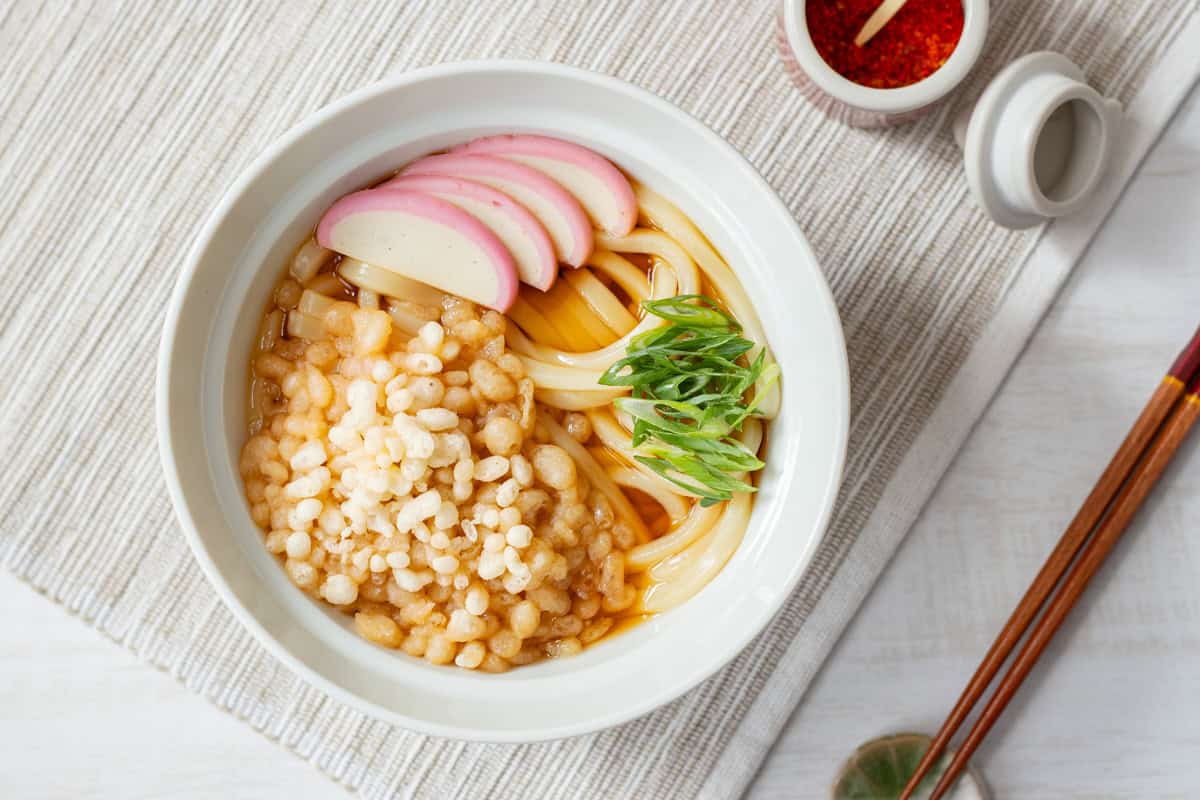
Regional interpretations
Tanuki udon is well-known in Japan's Kanto region (eastern Japan), but the name is hardly recognized in the Kansai region (western Japan). In Kansai, udon noodle soup topped with tenkasu is known as "agedama udon" or "haikara udon" (though the flavors differ slightly).
Interestingly, even within the Kansai region, particularly in Kyoto, the term "tanuki udon" refers to an entirely different type of udon noodle soup. This version features a starch-thickened broth served with udon noodles, topped with aburaage (fried tofu pouches), cut into strips about ¾ inch (2 cm) wide, and kujō negi (a type of Japanese leek that is a specialty of Kyoto).
Therefore, if you were to talk about this dish with someone from the Kansai region, they might not know what you are referring to—or, if they are from Kyoto, they might picture a completely different kind of udon noodle soup altogether.
Regional styles of udon soup seasoning
When preparing tanuki udon with tempura bits, it is best to focus on the flavor of the udon soup.
The seasoning of udon soup varies primarily between the Kanto and Kansai regions. In the Kanto region, a large amount of soy sauce is used, giving the soup a rich color and a strong, salty flavor. In contrast, the Kansai region uses a more flavorful dashi broth and less soy sauce, resulting in a lighter color and milder saltiness.
Tanuki udon can be made with either style of seasoning, but since it is a popular dish in the Kanto region, I highly recommend using the Kanto-style seasoning. Unlike Kansai-style udon soup, which typically uses kombu (dried kelp) for dashi, the Kanto style is characterized by a heavier use of soy sauce. Try it with my recipe!
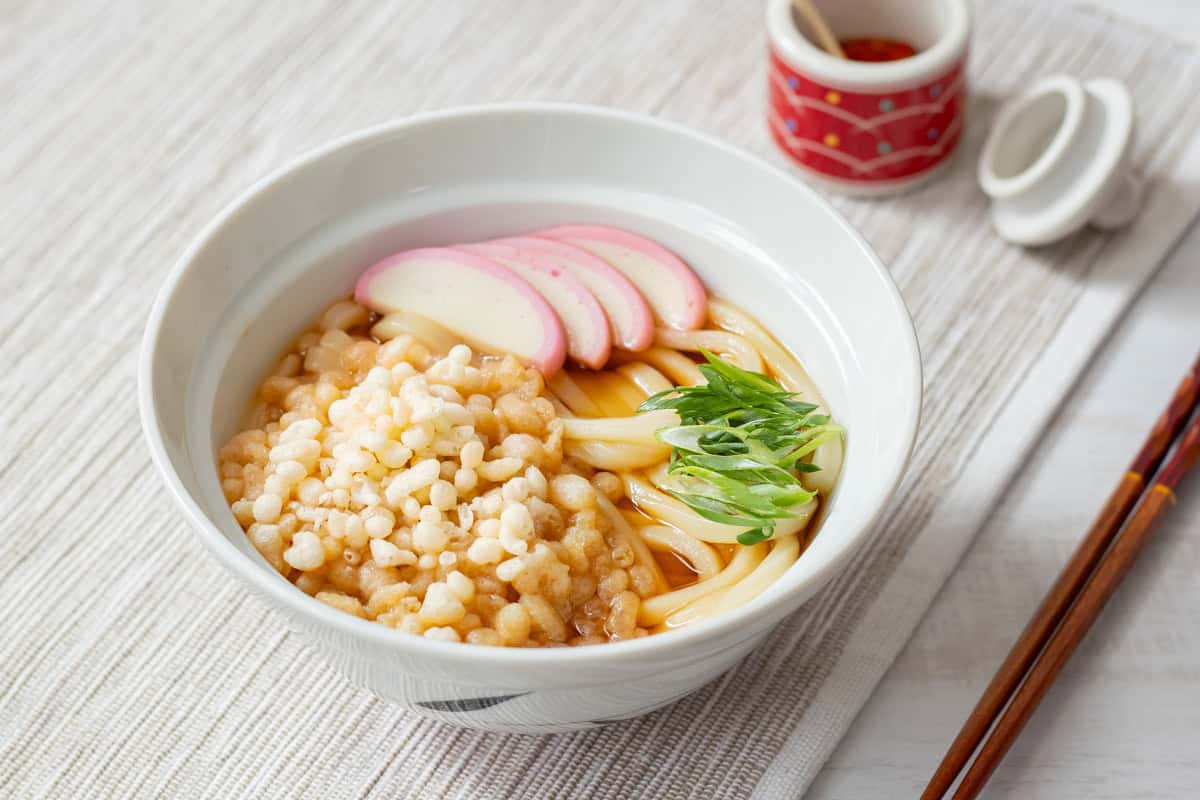
📋Step-by-step recipe
Ingredients
- 1 serving udon noodles (fresh, dried, pre-cooked, or frozen)
- 0.35 oz kamaboko (fish cake)
- 1 green onion / scallion
- 1 Tbsp mirin
- 2 Tbsp soy sauce
- 3 Tbsp tenkasu (tempura bits)
Bonito dashi (udon broth):
- 1 ½ cups water
- ⅗ cup bonito flakes (katsuobushi)
Instructions
🕒 Total: 15 minsIf you already have udon broth (bonito dashi or another type of dashi), start from step 3. In that case, use 1 ¼ cups (300 ml) per serving.
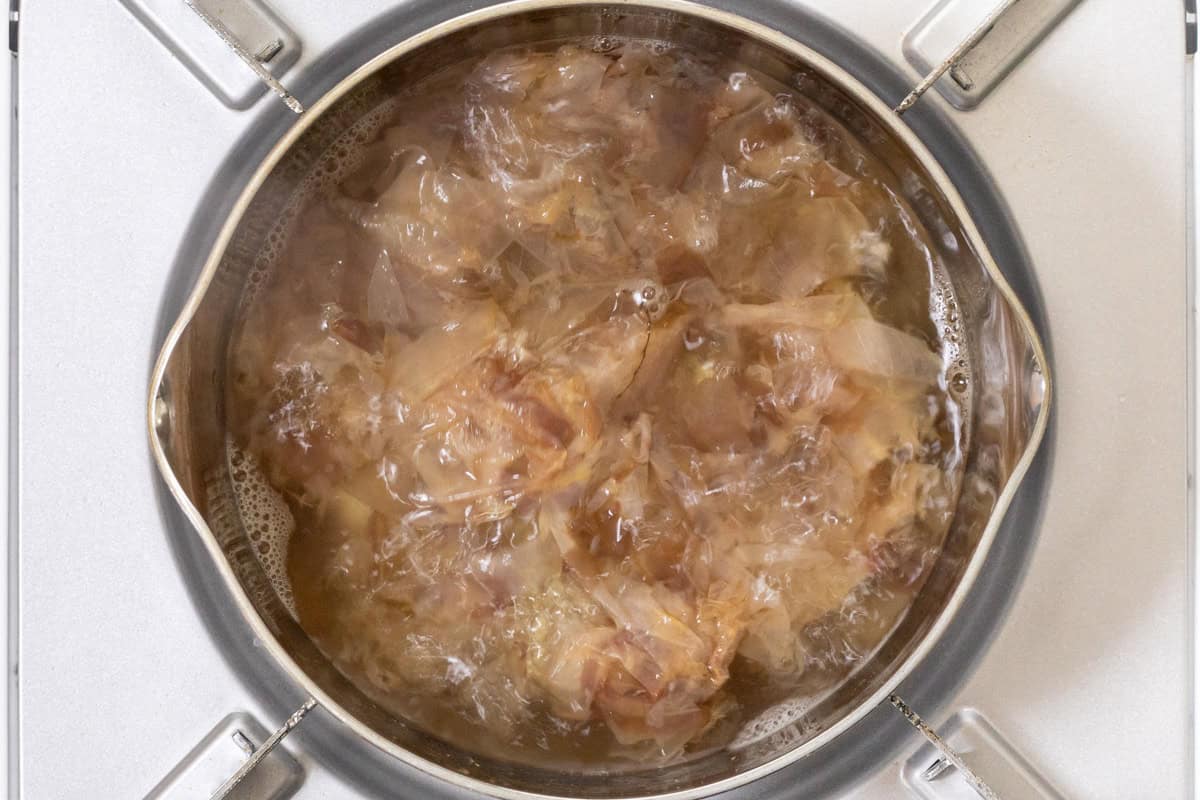
Step 1
Fill a pot with water and bring it to a boil. Once boiling, reduce the heat to low, add bonito flakes, and let it simmer for 6 minutes.
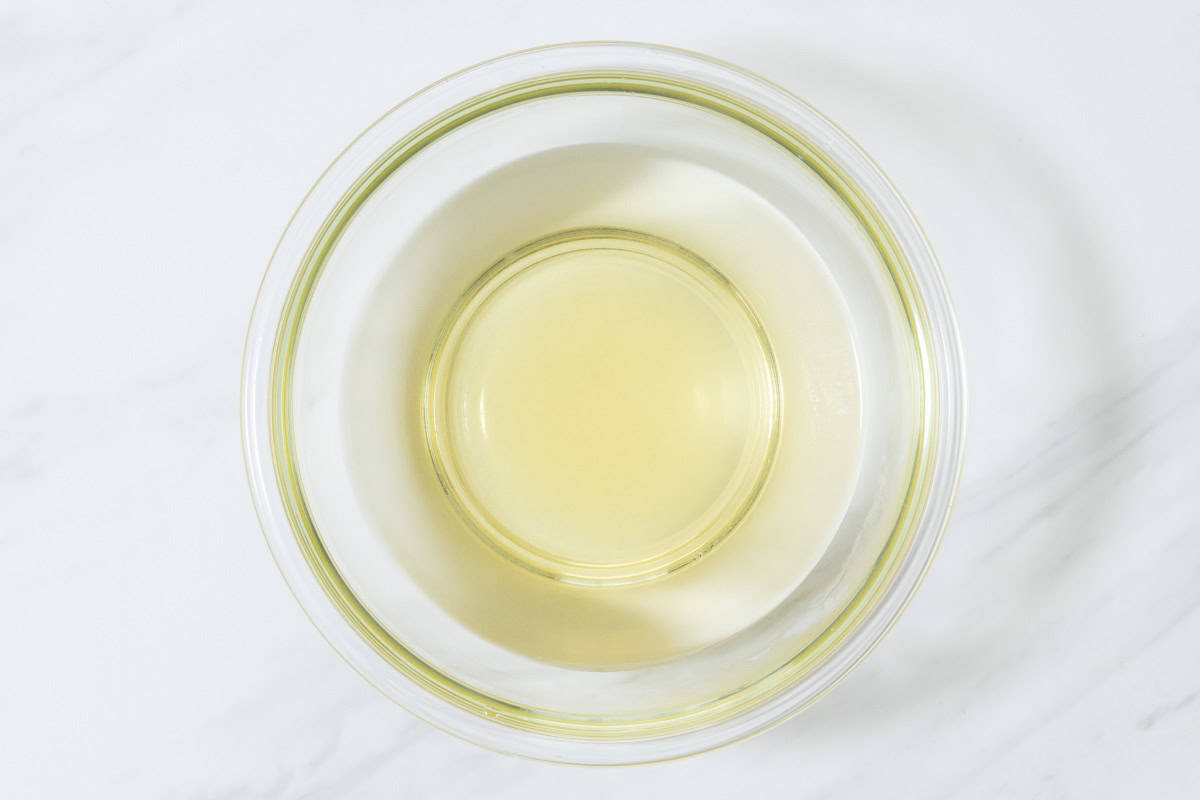
Step 2
Turn off the heat and strain the mixture through a sieve lined with paper towels or a cloth (such as cheesecloth). Alternatively, if you don't mind a few fine bonito flakes remaining, you can simply use a fine-mesh strainer. Bonito dashi (udon broth) is now ready.
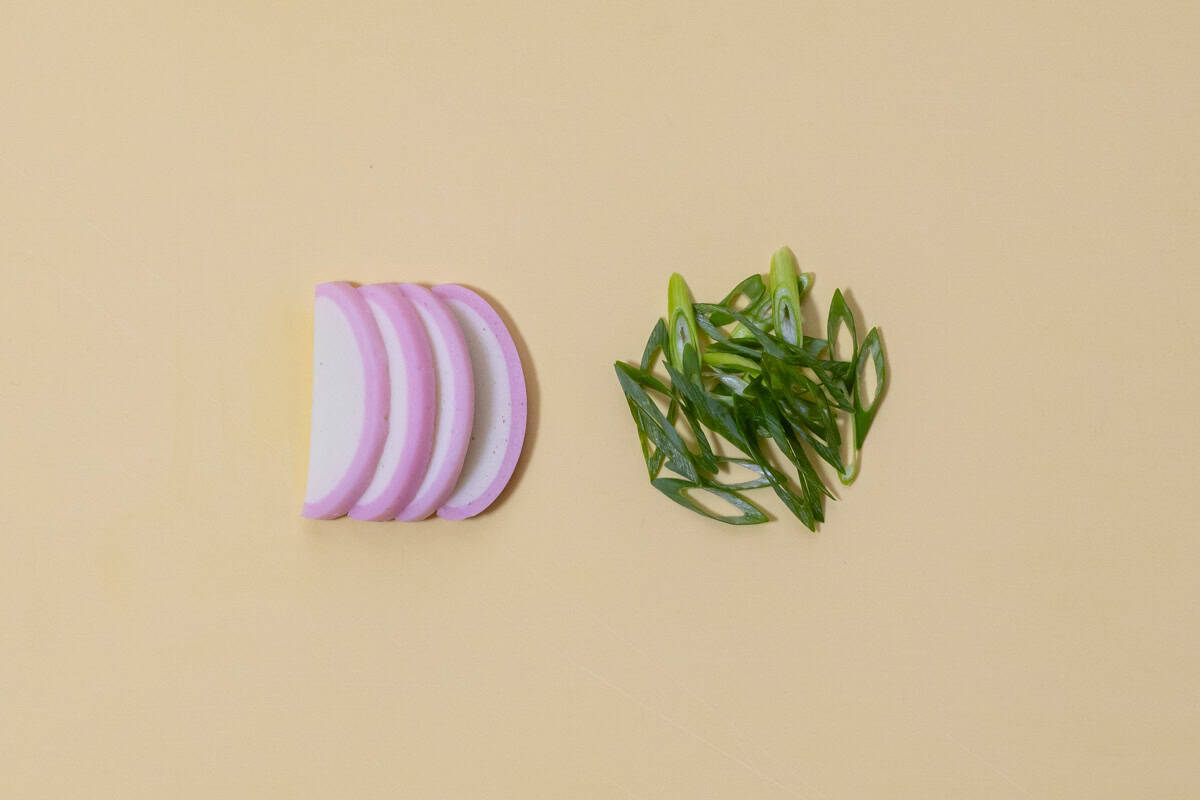
Step 3
Slice the kamaboko into thin, bite-sized pieces. Thinly slice the green onion diagonally or into rings.
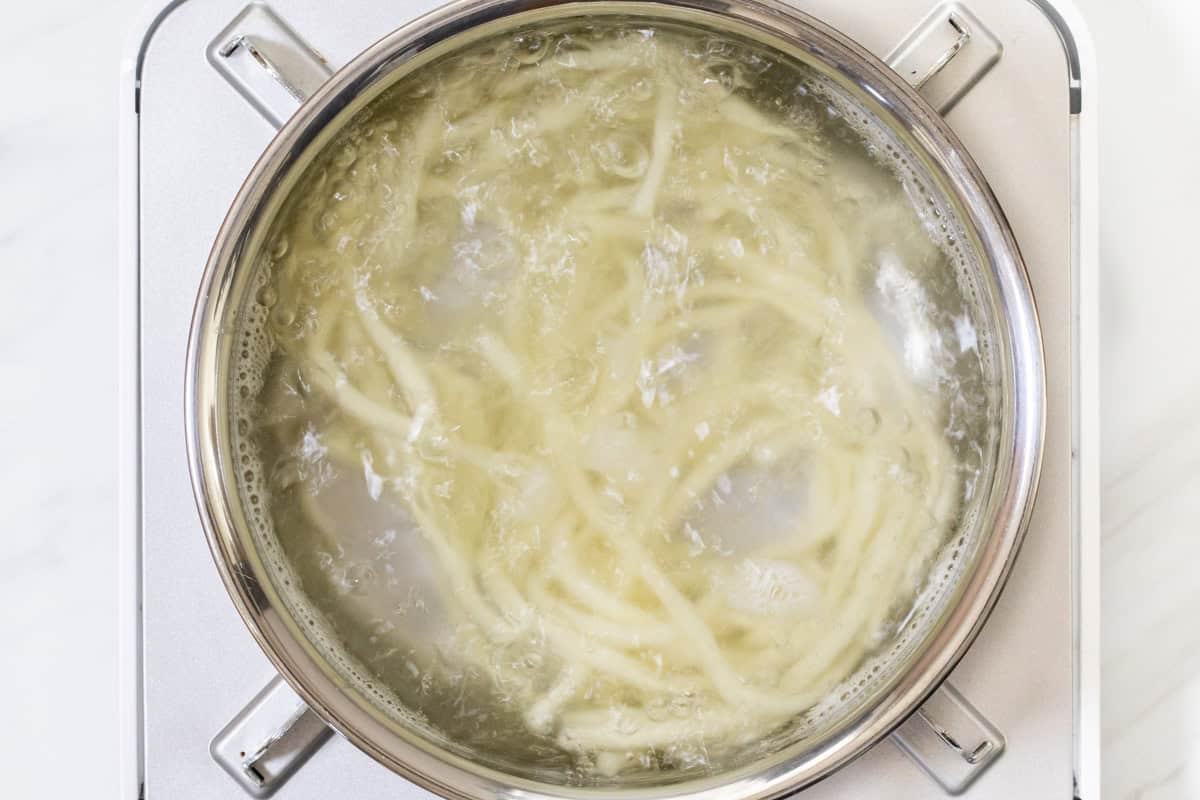
Step 4
If using fresh, dried, or pre-cooked udon noodles: Boil the udon noodles according to the package instructions. Once cooked, drain them in a colander.
If using frozen udon noodles: Lightly sprinkle water over the udon noodles. Then, place them on a microwave-safe plate, cover with plastic wrap or a microwave-safe lid, and microwave on medium power (500-600W) for 3.5 to 4 minutes, or until heated through. (Since this method can cause uneven heating, it is best to microwave one serving at a time. You can also boil them like the other types of udon noodles.)
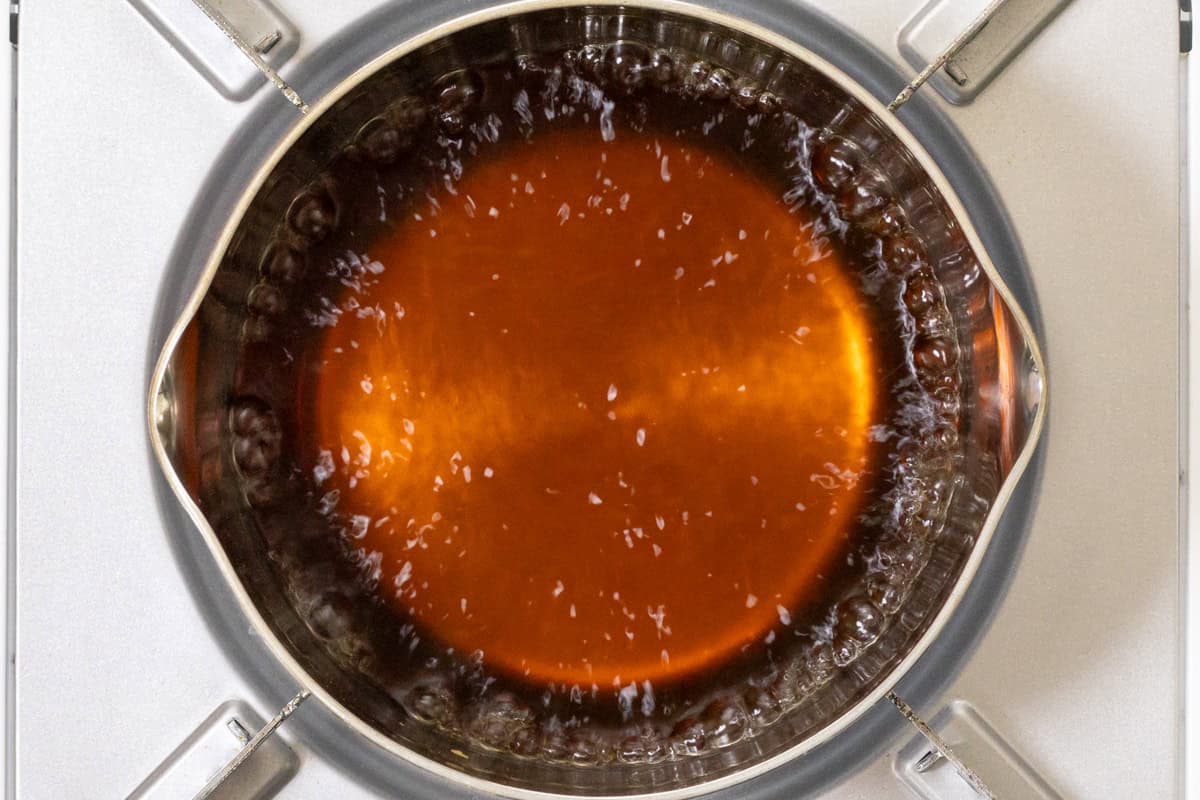
Step 5
Return the dashi to the pot, add mirin and soy sauce, and bring it to a boil. Once it starts boiling, remove it from the heat.
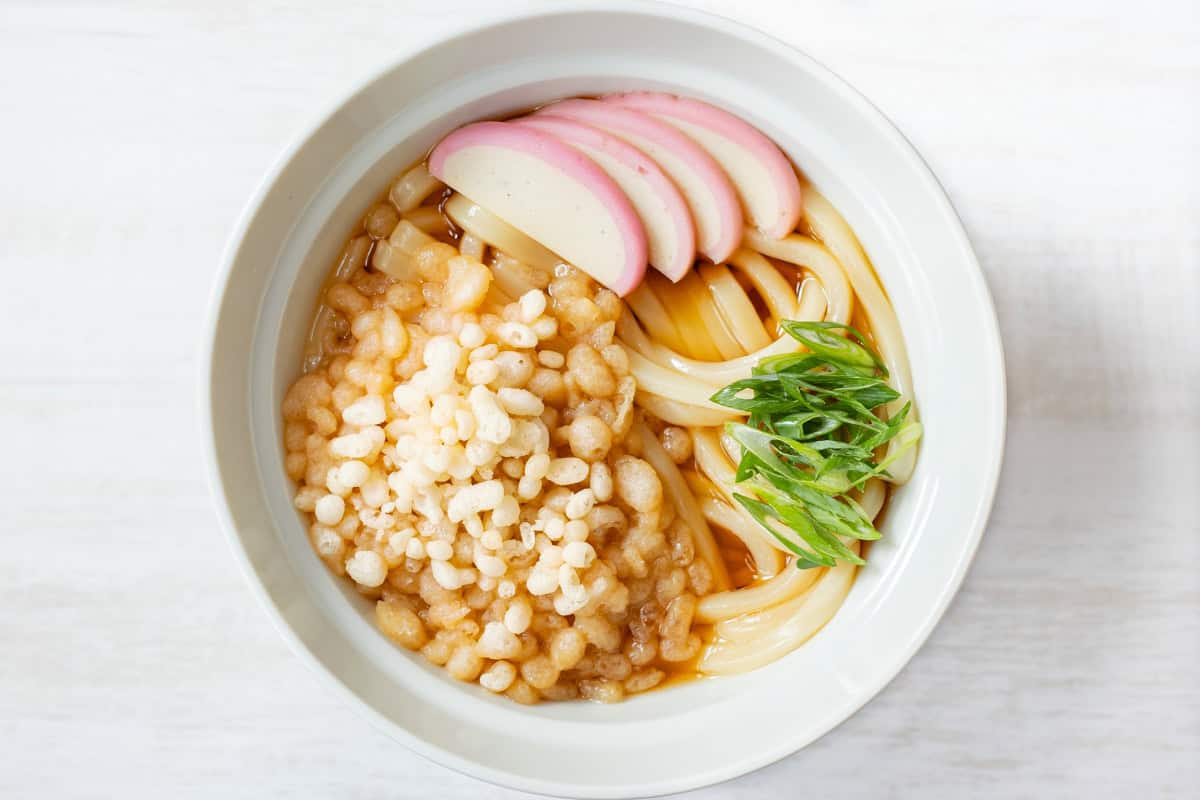
Step 6
Place the udon noodles in a bowl and pour the liquid mixture (udon soup) over them. Loosen the noodles with chopsticks, then top with tenkasu, kamaboko, and green onions.
To store
This dish is not suitable for storage because cooked udon noodles tend to lose their texture over time, making them less enjoyable. However, the udon soup itself can be stored for up to 3 days.
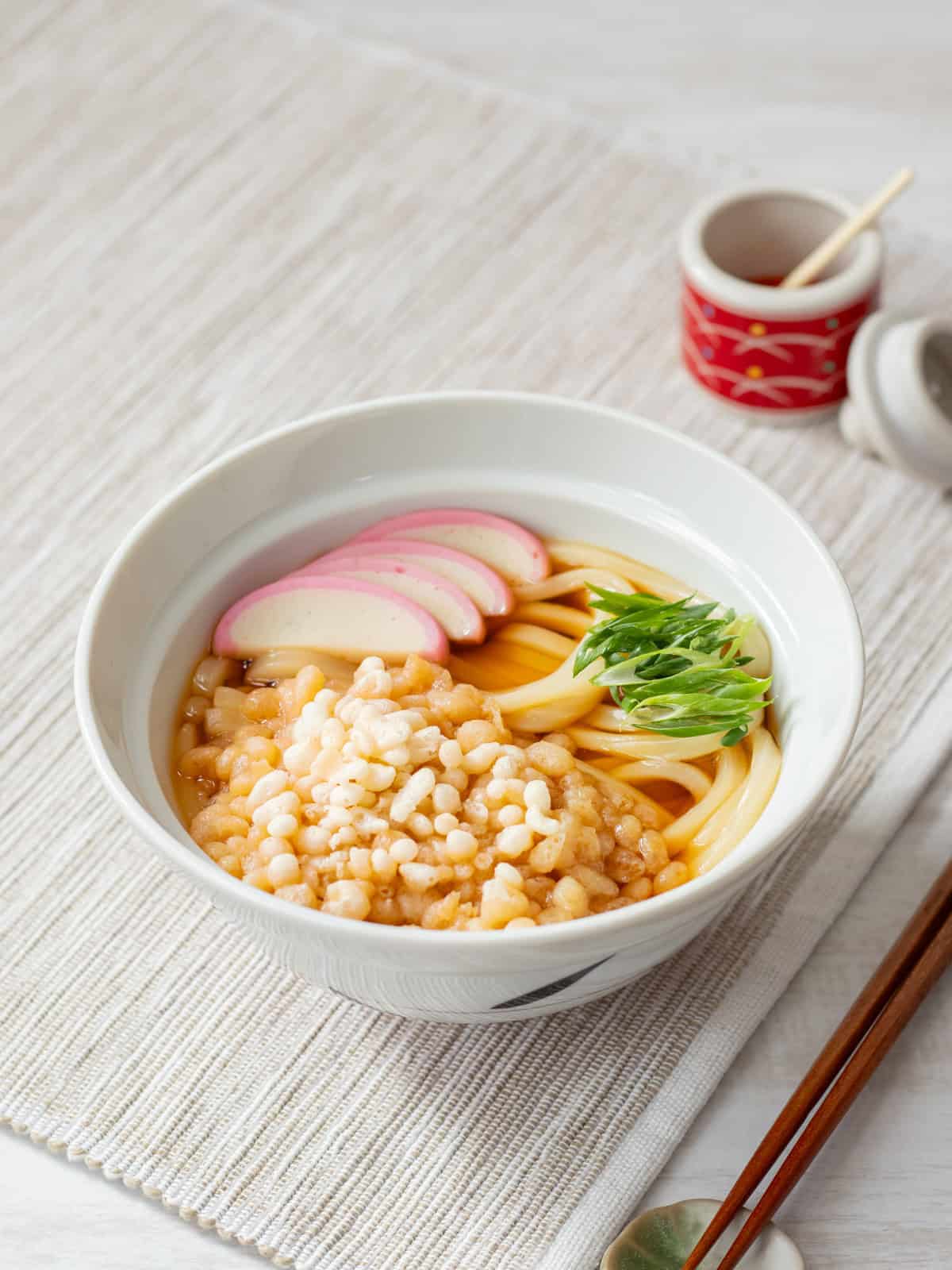
If you try this recipe, I’d love to hear what you think. Please consider leaving a review and star rating in the comments below. If you enjoyed it, I’d really appreciate it if you shared it with your friends.
More udon noodle soup recipes you'll love
Recipe card

Tanuki Udon (Udon Noodle Soup with Tempura Bits)
Ingredients
- 1 serving udon noodles (fresh, dried, pre-cooked, or frozen)
- 0.35 oz kamaboko (fish cake)
- 1 green onion / scallion
- 1 Tbsp mirin
- 2 Tbsp soy sauce
- 3 Tbsp tenkasu (tempura bits)
Bonito dashi (udon broth):
- 1 ½ cups water
- ⅗ cup bonito flakes (katsuobushi)
Instructions
- Fill a pot with water and bring it to a boil. Once boiling, reduce the heat to low, add bonito flakes, and let it simmer for 6 minutes.
- Turn off the heat and strain the mixture through a sieve lined with paper towels or a cloth (such as cheesecloth). Alternatively, if you don't mind a few fine bonito flakes remaining, you can simply use a fine-mesh strainer. Bonito dashi (udon broth) is now ready.
- Slice the kamaboko into thin, bite-sized pieces. Thinly slice the green onion diagonally or into rings.
- If using fresh, dried, or pre-cooked udon noodles: Boil the udon noodles according to the package instructions. Once cooked, drain them in a colander.If using frozen udon noodles: Lightly sprinkle water over the udon noodles. Then, place them on a microwave-safe plate, cover with plastic wrap or a microwave-safe lid, and microwave on medium power (500-600W) for 3.5 to 4 minutes, or until heated through. (Since this method can cause uneven heating, it is best to microwave one serving at a time. You can also boil them like the other types of udon noodles.)
- Return the dashi to the pot, add mirin and soy sauce, and bring it to a boil. Once it starts boiling, remove it from the heat.
- Place the udon noodles in a bowl and pour the liquid mixture (udon soup) over them. Loosen the noodles with chopsticks, then top with tenkasu, kamaboko, and green onions.
Notes
- If you already have udon broth (bonito dashi or another type of dashi), start from step 3. In that case, use 1 ¼ cups (300 ml) per serving.
- This dish is not suitable for storage because cooked udon noodles tend to lose their texture over time, making them less enjoyable. However, the udon soup itself can be stored for up to 3 days.

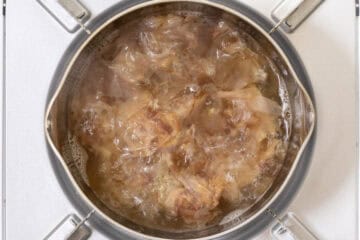
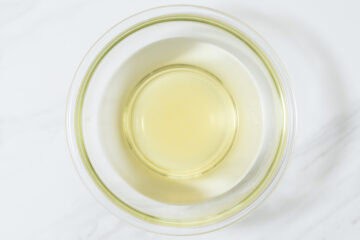
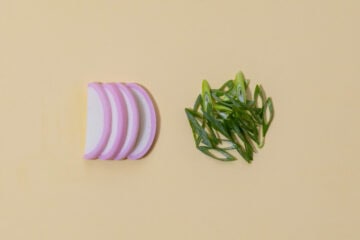
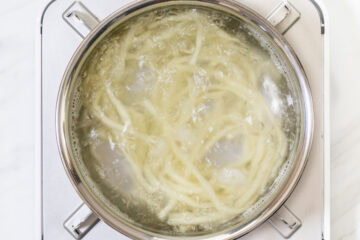
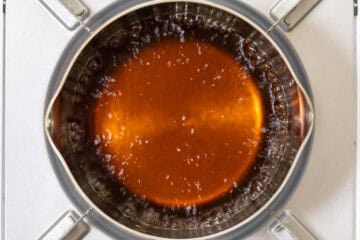
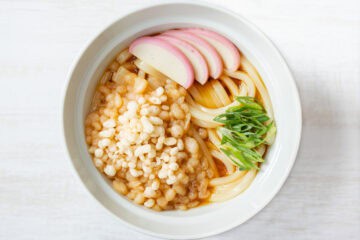
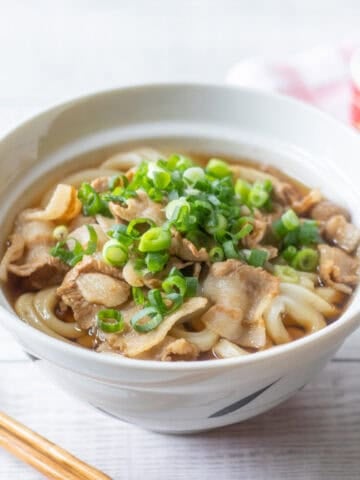
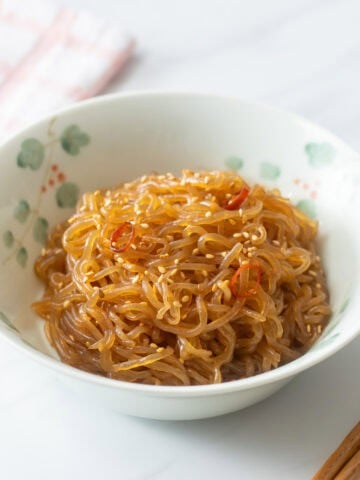
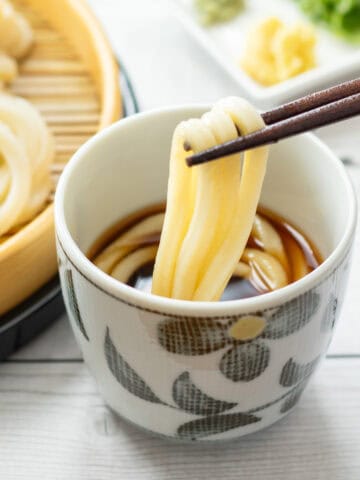
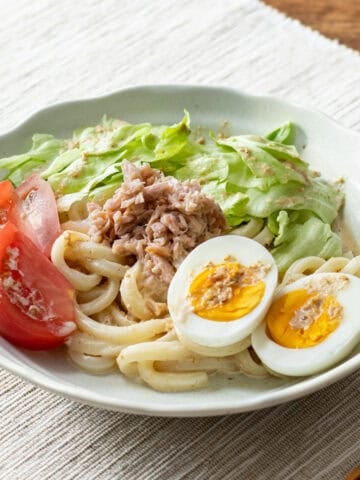
Leave a Rating and a Comment